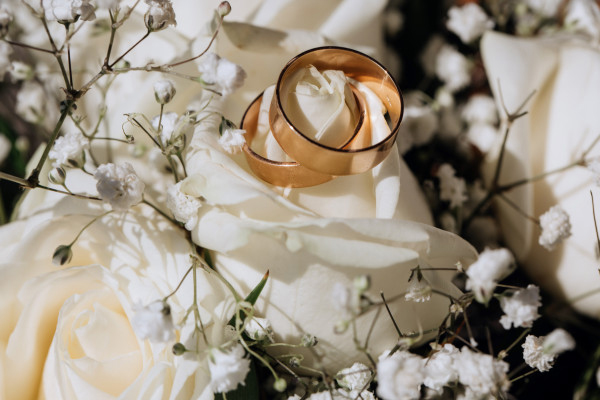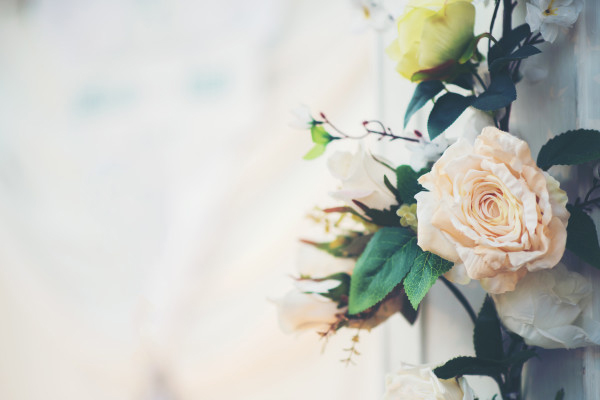
Despite the constantly changing and shifting trends in wedding culture, the one thing you can almost always rely on seeing at a wedding is flowers. Wedding flowers are their own industry. In recent years, more service providers have been working towards being able to provide their services to a wider range of clientele with different budgetary needs and restrictions. Alison Fleck of Juniper Designs and Bloom Culture Flowers is a top floral designer who’s been recognized by the likes of lifestyle mogul Martha Stewart. Joining Jamie Wolfer and Heather Loree Fier, Alison dives into the ability of a business to provide service to people at different price points. Empower your clients by making them an active part of your process.
—
Listen to the podcast here:
Important Links:
Yes! You Can Develop Your Business To Serve All Price Points With Alison Fleck
Heather: We have an amazing guest, Alison Fleck from Bloom Culture who is such a pleasure. She is here to share her love and nerdiness for florals with you. In addition to that, this savvy lady has developed a business model that is pretty much shaking things up in her area out in Oklahoma City. She’s going to tell us about the progression of her business from the traditional first full-service florist towards this new innovative version of floral that allows her to service some DIY couples that maybe wouldn’t have been able to access her before. She’s going to talk about how this business doesn’t compete with her traditional business and how it can help couples and vendors. Some of the advice she has for those of you who are interested in maybe diversifying and opening up some other channels in your business by helping some of these couples who couldn’t access you before. This is going to be such a fun, upbeat conversation with Alison about the opportunities here for you.
—
Heather: I’m excited Alison is here. She is someone that I’ve had the pleasure to work with over with the Wedding Hacker Expo. She also helped me out with my gratitude party, making some amazing stuff come together for a DIY bouquet bar. She is an expert on flowers. She also has a creative spin to the floral business that I love. Alison, thank you for being here. We are excited to talk to you.
Alison: Thank you so much for having me. I’m excited to be here.
Heather: Jamie, I know you’re a little bit new to what Alison does. Do you want to ask her how her whole biz works?
Jamie: First of all, I do want to say I was tempted to do a deep dive into what your business is, Alison, but I figured I’m going to stay new and I’m going to stay green because then my questions will feel more organic. This is what people who don’t know what your business is like are going to want to ask. Can you tell us a little bit about the progression of your business? How did you start and what is your vision?
Alison: I started in the floral industry when I was in college. I started with a mom-and-pop shop. I learned all of the traditional mechanics, which are essentially traditional ways of doing wedding flowers and retail flowers. After college, I was in my all lovely corporate job and I wasn’t happy there. I also wasn’t excited about how somebody else would dictate how far I would go. Somebody in that same office was like, “I’m getting married. I don’t have a big budget.” I was like, “That’s great. I can do flowers.” I did her wedding and progressed into wanting to start my own thing. Fast forward, it happened quickly and then I started Juniper, which is a local floral business in Oklahoma City.
While I was doing Juniper, I wanted to create an outlet not necessarily to be serving brides but to be serving the community. I had a lot of people that would come up to me and say, “I can never do what you do.” I called BS and was like, “It’s not rocket science. It’s not brain surgery. They’re flowers, you could do what I do.” They’re like, “No.” That was when workshops were reckoning big. I didn’t want to call it a workshop, I just didn’t want to. I created a community class and that’s where Bloom Culture was born. After a few goes, that was back when the Instagram algorithm was your best friend. I would post a class online and it would fill up within 24 hours. We would have this giant experience of flowers. I wanted people to feel the way I felt around flowers which was magical. I would have lots of different varieties.
A lot of people hadn’t ever worked with them or hadn’t been around them like, “What’s this variety?” I wanted to teach. Bloom Culture was my outlet for teaching. I had lots of community classes and then I had a child. Me spending eighteen-hour a day during community classes on top of doing Juniper became hard. Also, it became hard to sell the classes because it was posted on Instagram and it would sell out within an hour or two. After some things changed on social media, I would post a class and nobody for a week would purchase a ticket because they wouldn’t know about it. It was lots of those things where it wasn’t as easy as it used to be, then I had another child. Bloom Culture, I don’t think I had done one for a year. I did when my daughter was maybe 6 or 8 months. It was one of those things that were born out of necessity.
It empowers people to be able to make choices by themselves. Click To TweetAfter I had my son, he’s almost two, I couldn’t be the businesswoman and the mom I wanted to be. It was a lot. I was like, “How can I monetize off of what I know?” I thought of the idea for Bloom Culture. It wasn’t until I was like, “Maybe I can do an online course. Maybe I can do this and that.” Even with Juniper, people always say, “I love what you do. I can’t afford it.” With changing wedding trends or changing wedding culture, people are able to afford it or they don’t want to afford it and they want something that’s less expensive.
I’ve realized that there was a niche market here and that there was a way to serve a multitude of clients, whatever their budget was. I had to figure out how. That’s how Bloom Culture was initially born. I was thinking I know what I know and I can help who I can help. How does that look different for somebody who wants to go to a boutique florist or a traditional florist or somebody who’s like, “I can do that?” At the end of the day, Bloom Culture and Juniper were all about empowering people to have the wedding they want and to have the look they want whether if they want to pay me to do it or if they want to spend their time doing it. How it was born was out of necessity.
Heather: Alison, I love that you are trying to empower people through what you’re doing. Jamie and I are both on that same wavelength with what we offer because there are all couples out there. They need different things. Not being afraid to offer something that initially might feel like it’s competing with yourself opens up huge possibilities instead of trading your time for money in a direct way. You have something scalable that you’re building.
Alison: It empowers people to make the choice themselves. It was respectful and civil, but somebody was like, “What about us florists?” I was like, “I am a florist.” It’s hard to not feel like there’s scarcity out there because weddings are happening whether or not they have a florist or whether or not they have professionals here and there. I’m somebody who’s on a budget too. I’ve got two kids and we’ve got a mortgage. It’s one of those things that I wanted to build out something approachable and that catered to different people. A lot of people have a misconception of a DIY bride. That was one of my goals too.
First, my tagline was like, “We’re dedicated to breaking the stigma of a DIY bride.” I was like, “I don’t know if I want to bring up the stigma of that, but they’re not all shotgun weddings.” They’re not stereotypical. What people think of a DIY wedding is that it doesn’t have to be that anymore. I’ve said this many times that it sounds lame, but instead of being like, “She DIYed at her wedding,” people should start a slow clap. “You DIYed that?” Slow clap instead of judging the person. Our culture is consumerism and more, the newest iPhone, the newest this. What about paying off your debt? Have you done that? That feels good. It’s for people to have options. That’s the best way you can empower someone. Instead of cornering somebody and telling them all the horror stories of the DIY projects, why not figure out a way to say, “To avoid all of these horror stories, follow me down this path. I will give you flowers?”
Heather: “Here’s the guidance you need and you do have the ability and some basic skills, you can make this happen.” You’re in this. You’re a florist actively doing full-service projects and you’re also running Bloom Culture. Do you ever feel like you are competing against yourself?
Alison: No, not one bit. A client that wants Juniper would never be a client that would seek out Bloom Culture and vice versa. If you’re a Bloom Culture client, you might look to Juniper for inspiration, but you would still seek out ways to get that in an affordable way. It essentially may not necessarily be your “high end.” With Juniper, I use more expensive blooms, but I talk about that in Bloom Culture. I say, “You can still have some expensive blooms, but maybe we don’t have them everywhere. Maybe we’ll have them in your bouquet.” The bridal bouquet is the number one photographed floral element in every single wedding. “Do you want those peonies? Let’s get them in your bridal bouquet. They come five stems to a bunch and this is how much they cost. Let’s get a different type of rose that’s a similar color palette for the rest of your wedding.” There are ways there to empower her. A lot of people come and say, “I know I can’t afford this.” Not to sound belittling, but it’s like, “Let me help you. Let me tell you what you can afford.” Chances are you can probably still have what you want.

Wedding Flowers: You empower people to make choices knowing that that is exactly how you would want to feel, regardless of your budget, or how you want your wedding to look.
Heather: This is special that you have this perspective on it. It’s something that needs to be out there more. I wish there was more of this in every aspect of wedding planning and the wedding industry. I feel like you hit the nail on the head when you mentioned people being afraid of this lack mindset almost that they can’t do this. I see that in what I do. I get messages from people being like, “You can’t tell people these wedding hacks. This is all going to turn crap for them.” I’m like, “No.”
Alison: It’s that whole scarcity mindset, but it’s also information. They can find out all of this information on the internet. What’s great about Bloom Culture is that you don’t have to spend hours digging, sifting, learning and wondering, “Is this right? Am I doing this right? Is this what I need?” Let’s take out all that BS. Let’s have the fun part. Do you want to surf through Pinterest? It’s wonderful. You want to make a Pinterest board and then you send it to me. That’s how I start with any consultation, whether it’s through a traditional approach or whether it’s a DIY approach. I don’t treat the clients any differently. One client, I’m serving and taking care of to the best of my ability for their wedding day, the same thing for the other client. I am not withholding any secrets. It’s not brain surgery and I hate the idea that if we tell them all, some of them may become a florist, but that’s okay.
The wedding industry is a $9 billion industry. I struggled with it too. There’s this idea of if I’ve worked how many years to know all this stuff and you’re telling people to do it, I’m like, “Yes, but if they can do it and they pull it off, that is their choice.” They’re going to do it regardless of whether or not I’m here to help them. They can either struggle and trudge through it or I can help them and it can be a better experience. At the end of the day, whether or not they used the Bloom Culture if they decided to become a florist, that’s none of your business. Who am I to say what somebody else is capable of doing, what their passions are and what their artistic creativity is? It’s this whole thing of scarcity. I sometimes still struggle with it. Social media doesn’t help at all. At the end of the day, I’m trying to empower people because that is exactly how I would want to feel regardless of my budget, regardless of what my wedding looked like. I would just want to feel empowered that that day was going to be beautiful and that I could make it beautiful.
Jamie: Here’s the deal. It’s not the people who go to Bloom Culture would be Juniper’s clients because they’re in a different demographic. They have different priorities. They have different desires.
Alison: A lot of them are paying for their wedding. Again, made-up statistic, but I’m going to say 75% are paying for their wedding. There are a lot out there that the parent, the mom or the aunt or whoever is paying for the flowers and doing it themselves. Still, it’s a different market. It’s a market within a market.
Jamie: That’s something that Heather and I have discovered as we delved into our courses and we’re providing free content. I’m starting to realize that the people who have bought the master plan would not be the people that would hire me. The master plan is my online course, but they’re not necessarily going to be the people that hire me and fly me across the country to run their wedding day. It’s a different subset of clients and when you diversify and you open up these options, it meets a need that’s not being met. What has the response been from your clients and other florists?
Alison: From our clients, it has been monumental. To answer your question, the response from our clients has been an overwhelming and resounding, “This has been amazing. Your process has been amazing. More people should know about this. Thank you for respecting my budget. Thank you for letting the flower. That’s exactly what I wanted. You nailed it. Everybody asks me who did the flowers. I get to say I did. I tell them about you. This is amazing. Why don’t more people know about that?” We have been truly trying to serve our local market because we are a national brand, but still working out some of the kinks. We’ve been hitting our local market hard. We went to a local bridal show with Juniper. I never would have done that. I’d never needed to do that. With Bloom Culture, I do. It’s different. We had lines multiple times. I did not expect that we’re the only florist at this show. I talked to the people who put it on and they were like, “Florists don’t ever come to this.” I was like, “Jackpot.”
For customers with stricter budgets, make sure to discuss priorities. Click To TweetThere’s a completely underserved market here. I lost my voice. I like to talk a lot. That’s crazy that I lost my voice. I was in it. I had an idea. I was like, “We’re going to make boots and I’m going to show them how easy.” I didn’t even get to do that. People were like, “How much will I save? How does this work? What is this?” I can’t tell you how many people have been like, “This is exactly what I need. This is exactly what I’ve been looking for.” It’s been resounding, positive feedback from our clients. The one thing too is I’m also not going to pull the wool over your eyes. DIY is Do It Yourself. You will be doing the work. I’m going to be upfront with you. If you have 30 tables like, “Let’s cut those down. Let’s do another decor.” I’m not going to sit there and be like, “Let’s do 30 tables for somebody who’s never done this before.” I’m like, “No.” I have tips and tricks to help them break down the reception and different designs so that they’re not taking on a monumental task.
I make sure that they know how many helpers they’re going to have. If you’re having this size of a wedding, I recommend this many. This is your time frame. I can’t stress it enough. It is a guided approach to DIY. You’re still doing it yourself, but you have a game plan to stick to and you’re not flailing. If something goes wrong, I’m there. Sometimes things do go wrong. Sometimes things come in the wrong color or they come in dead. All things that a florist is seasoned at and doesn’t get flustered by, but these people, it is their first rodeo. I’m going to help you through it. I get super passionate about it. I’m excited about it. I love serving people.
Another made-up statistic, but 85% of the time when I get off my consultations, I feel like we started out and they’re hesitant and we’re nervous, then by the end of the consultation, they’re like, “I wish it was tomorrow. I’m excited for this.” That’s been some feedback from our clients. The other side of that is I would say it’s a mixed bag from the floral industry. DIY has still had this stigma to it and lesser than stigma to it. I’m here to call it BS. It’s been a mixed bag. I don’t want to come off pompous, rude or even aggressive. I’m like, “We’re all in this together. I understand you’re trying to make a living, so am I.” I’ve also seen a few people jumping on the bandwagon too. I’m awaiting a few other companies that seem to maybe want to do this too. I’m like, “Yes, do it. I can’t take all the DIY wedding. You can take it. Let’s do it. If you need my help, here we go.”
Jamie: Especially because it’s such a largely underserved area of the getting married population. I DIY my florals. I can personally attest to how that was experientially for me. I went on to afterward then doing florals for two styled suits because I was inspired by it. I enjoyed it much. I didn’t have a recipe to go off of. I was making it up. I was in a panic. Was I inspired by it? Yes. Did I find joy in it? Yes. Had I had a resource like this? I never would have been the bride to hire a florist because we couldn’t afford it. Were florals important to me? Absolutely, but I couldn’t make more money appear. This serves who I was when I was getting married for sure.
Alison: It’s one of those things that people think that they’re uneducated. It’s a stigma. It’s a stereotype that’s inaccurate and quite frankly rude. Most everybody is educated and has a great vision. It’s not thrown together. It’s one of those things that there are people who are not going to go down the rabbit hole to find a DIY florist if they’re not looking for a resource there. If you’re going to google flowers in whatever region you’re in and you’re going to pick out your florist and you’re to have a consultation with them, that’s the route that you’re going. You stop when you find a couple of florists and you get a couple of quotes and then you decide from there. That’s a market. The other aspect or other pendulum swing is there are people who will dig, research and try to find, and they’re doing all of this work that is taking up so much time and totally creating a ton of stress.
One of the things that I say the most is that we take out all the guesswork. You tell me what you need and I’m going to pop out some recipes within your budget and then tell you how many wholesale flowers you need and what those costs. If you need it, I’m going to ship them to your door. It comes second nature to me and it’s something that I’m passionate about. I know the seasons of flowers. I know flowers that are going to give you a true coral. I know flowers that are going to give you a true purple. I know flowers that are fickle. I know that you love an anemone, but they’re hard to work with. Sometimes I scream at them because they suck like, “That’s my wall.” It’s one of those things where I know, and I can give them a heads up. I’m not going to say, “You’re going to get a bunch of ten anemones. They’re going to come, they’re going to open and they’re going to be beautiful. They’re not going to bruise.” If you get that, then mercury is not in retrograde. There are unicorns, fairies and all the blissful naturey things are happening. Anemones will arrive and give you the middle finger and I need to be open with you about that.
Heather: The expectations you’re setting for the couples who are working with you in this guided DIY path is important. With any business, we want happy customers. You have to give clear expectations and ideally over-deliver on the expectations.

Wedding Flowers: The needs of a high-end wedding are different from that of a DIY wedding.
Alison: I always do that. I set the bar low like, “They may not come in great. We’re going to have a backup plan. We’re already going to have a backup plan in place. It’s already going to be in your budget.” There’s the whole conversation of budget and money that people are either afraid to have or they’re bashful because I only have $300. That’s great. Do you know what costs $300? Bills. Do you know what costs $300? A car payment. Out of nothing to balk at. If you have, don’t come to me and say, “I only.” It’s like, “I’m going to help you use it wisely. What do you need?” There’s a big line between what do you need and what do you want? If I have somebody that’s on a strict budget. We talk about priorities and we talk through things like, “My biggest motto is, let’s put money where people are going to see it.”
Are they going to see it on the floor of your aisle? Probably not. Are there going to be bridesmaid standing in front of it? Yes. Let’s not even do it then. Having had the experience that I’ve had with my boutique floral shop, I know what it’s going to look like. I have an Interior Design degree, so I’m a visual person. That’s what I used to do before I did this. Not only am I able to visualize the flowers. You tell me what your venue looks like. A lot of times I ask for the link. If you have a link to your venue, let’s look at that together. I’m like, “This is what we need to do.” It’s not even flowers. It’s a big design approach too. It’s easy for me. It comes naturally to me. It’s second nature helping them put their money in and spend their money wisely and empower them to do this. I’m going to do the hard part, that way you get to do the fun part. There’s no guessing of like, “How many flowers do I use in this? I need many flowers.”
It’s the simplest math, but it’s complicated. I’m like, “Siri, what’s 15 times 2?” She’s like, “Alison, it’s 30, honey.” I was like, “Thanks, Siri.” I was feeling a little insecure. “Did I activate my Siri?” They’ve got many other things on their minds. This is one of the things that I think excites people the most because flowers are beautiful. Heather, you going to test to this and so can you, Jamie. When you get them, they’re pretty. It makes you feel magical. It’s a part of nature and not everybody would agree with this, but God didn’t have to create flowers. Maybe He could create flowers, but the diversity, varieties, species, smells and colors, it dances and it’s beautiful. I am a flower nerd but I love it. I know the joy that it can bring people.
Especially people thinking, “I can just have these flowers.” I’m like, “Just? No. You can have this.” I talk about petal structure like, “Let’s maybe use this rose. This petal structure is a little bit different than your standard spiral petal structure. It feels more a garden rose or cabbage rose. It feels more special.” It’s only a fraction of the cost of a garden rose. I use a variety called Moonstone and I give you a technique that you spin it open and then it’s the size of your face and it’s awesome.
Heather: I love that you’re a floral nerd. It’s amazing that you have the heart to want to help these people who generally this industry gives the middle finger to. I was like, “No, we’ve got a 3,000 minimum here, so step back.” The reality is that a budget of a few hundred dollars, you can take that pretty far. I know you helped me with this DIY bouquet bar that I had at a party at my house. I spent $300, and It was a crazy amount of flowers. Flowers were everywhere in my bathroom, and I needed more buckets that I could source and borrow from every relative. I looked at that and I’m like, “Holy cow.” If I was throwing a party where I wanted to put the other centerpieces, this could take me far. I love that you guided me to find things that were going to suit the style we wanted and all of that at such a reasonable price point. I want to know what advice you would give to other vendors who might want to come up with something like this. To use their knowledge, to use that passion and nerdiness about whatever it is they’re needing out about. Build something that can help these couples who maybe wouldn’t be the right couple for them in their full-service business.
Alison: To answer that, my advice would be to do your market research. You can’t say, “I’m a high-end wedding and event planner. I know the needs of a DIY bride.” They’re different. You have to approach it differently. You have to think about it differently. You have to think about it from a monetary standpoint because these clients are not going to bite. They’re not going to be like, “This is what you’ve told me to do. I’m going to do it.” They’re going to do their research and they’re going to dig. The thing is that you have to give them something that’s of value. They can do on their own, but you give them the value to say, “I’m going to help you through this so that you don’t have to do X, Y and Z,” or “Here’s how you do X, Y and Z.” There’s the market research to understand who they’re working with. Jamie, you said, “I was always going to be a DIY bride. I was always going to do this path.” Understanding what that looks like from a different standpoint.
There are different vendors in our industry, I’m not quite sure who else it would work for, like photography. I’m not sure how you would DIY your photography, but I’m sure there’s a way that somebody could figure it out. There’s somebody who figured out how to DIY videography. I still don’t understand it, but I’m like, “Brilliant.” It’s figuring out what that target market needs, what that client needs, what they’re looking for and why they’re looking for it. People think that they know what a DIY bride is or what a DIY bride wants. That is monumentally different from what they actually are. There are people out there that might fit that stereotype, but a made-up statistic, it’s going to be 5%. It’s estimating. I also think you have to start. You can ask people if you want to launch a DIY portion, ask around and talk to people who’ve done it in the past like you, Jamie, and people who are considering it and who wants to do it.
It's all about constantly learning about your clients, adapting to and communicating with them. Click To TweetDoing your market research and narrowing down that target. If you’re finding yourself in an area where you think you might be in a niche market, then you need to figure that out because you could do all this work and then it busts. There’s a big learning process. I am undergoing lots of changes for Bloom Culture because our communication is not sealing the deal. A lot of times, people talk to me like, “I’ll seal the deal.” When it’s written out and when it’s communicated through a website or through social media, you have to hone in on the verbiage that is going to land those clients. It’s not a shoo-in. A lot of people are like, “You’re a DIY, they’re a DIY, match made in heaven.” You still have to earn people’s trust and you still have to provide them with something valuable. My advice would be to know your client and to do your market research on that.
Jamie: I love the theme that you made about just because they’re a DIY bride or DIY client doesn’t mean that your company is going to be the best fit for them. Early on in the wedding industry when I was first getting started and scared out of my mind, which we’ve all been there, it’s like, “How do I get clients? How do we get them to book me?” One of my mentors was like, “There is a tush for every seat. You don’t want all the brides, not all the brides want you, and that’s okay. They’re going to find somebody else or they’re going to find another way to make it work.” For me, I had to keep reminding myself of that for the first twelve months like, “I don’t want everybody, not everybody wants me, and that’s okay.” Just because they’re DIY doesn’t mean we’re shoe boxing them. We’re not putting them all into one container.
Alison: Everybody has different priorities. I have a client who’s like, “I hated flowers, but I like them now. I have to check it off the list. I feel like I have to have flowers, let’s do this.” For somebody that’s talking to somebody like me that I’m like, “I love flowers.” They’re like, “I’m checking this off the list.”
Heather: I might’ve been that bride. I would’ve been the one that was like, “We’ve got to get some flowers up in here.”
Alison: It’s like, “My colors are this.” You hear them lean over and talk to their best friend and she’s like, “It’s called Marigold.” I have friends who contacted me and it’s their wedding. They’re like, “No, I’m doing this for my friend because she didn’t care.” It’s not a one size fits all company. You do get the brides that are like, “I love flowers. They’re my spirit plant.” You have other people that are like, “As long as I don’t die, I’m okay.” There are still many layers to it. I’m still trying to figure out how to communicate. Doing a website review, I had a light bulb moment where I was like, “I’m not communicating one of my biggest selling points.” It was like, “What is that selling point?” I was like, “That I save you much time.” I tell you I do the hard part but when I start to tell you what the hard part is, your eyes glaze over. I tell you I’m going to save you money, but you already knew that’s why you’re here. What’s going to be the thing that lands these clients, it’s that I save you time.
It’s one of the things I struggle with the most is that everybody’s busy all the time and they don’t have time like, “Would you rather be sleeping or do you want to be googling how to DIY your flowers?” I think I want to sleep. It’s one of those things that Bloom Culture is still young. We’re still constantly learning about our clients and adapting to them and trying to communicate to them why we are great and why they need us. I’m looking at my website and I’m like, “We’re not telling you, we’re going to save you a ton of time.” I wish it could be, but I’ve got to be out there for the moms that are like, “We don’t like her.” Try to keep it clean. We save you a crap ton of time.
Heather: I think this is where this industry is going. To me, this makes perfect sense. I love it. I’m all about it. I could think that some of these couples who have no concept of what they’re even getting into because they haven’t planned a wedding before they’re going in blind. They’re following the major websites telling them the path. It’s branding yourself and communicating with them where they’re naively entering this and they don’t even know what they don’t know. That’s the challenge with this entire DIY spin or trying to help budget couples that don’t even understand how much of a mess they can get themselves in. How much they can overspend if they don’t follow these options? Do you find that’s tricky too? To me, sometimes they’re like, “It’s not going to be that bad. I’m going to find a florist who has a $500 minimum.” I’m like, “Where is that person? I don’t know that they exist.”

Wedding Flowers: Wedding trends and culture are constantly changing, but the one thing you’ll notice is that florals are, and will always be, one of the main components.
Alison: This is how I approached that was when I was getting married and I was my first and only rodeo for this. I had a vendor. It was belittling. I feel like I added this to the memory. I don’t think it happened, but I feel like she patted me on my head and said, “Honey, don’t worry. I do this all the time.” It was one of those things that I stewed on and I wish I was thinking of things that I should have said to her at the moment. Most of them had an expletive or two. When I started my first floral company, I would have this a-ha moment of when she patted me on the head and said, “Honey, I do this all the time,” to where I wanted to look at her and be like, “I don’t and it’s my first time to do this. You might do this all the time and you might have a gazillion clients that come through your doors. Good for you. This is my only chance to do this. I don’t know how to do this.” It’s not even more with Juniper or more with Bloom Culture, it’s how I approach that I understand this is your first rodeo and this is how I’m going to help guide you through it.
You can’t understand what’s going on in a client’s head whether they think $500 is a lot. I would say from it not being my first rodeo going to say the majority of the clients whether they are in a boutique florist or DIY floristry, I have no idea what their money will get them. They have no clue whether they want to pay for a florist or whether they want to do it themselves. They have no clue how much money we’ll get them. They can’t quantify what that’s going to be floor wise. I had a mom come in for my boutique floral and we talked through everything that they wanted. I always talk about the budget first thing and the last thing. “Where we are with your budget?” They tell me, then we talk through everything and everybody’s still excited about it. In my mind, I’m like, “They’re not getting this.” I have to bring up the budget again and talk about expectations.
It’s one of those things that I’ve been seasoned through. I’ve had to fight through for myself to be able to be comfortable to talk about money. I would say the majority of people are not comfortable talking about the money and it’s one of those things of how you handle them. I do the same thing with Bloom Culture. “Let’s talk about your budget. Let’s talk about what do you need and let’s talk about your budget again. If I need to help you cut it back, let’s prioritize. You need a plan for that. If we need to cut it back, let’s only do peonies in your bouquet.”
I approached the completely different client in the exact same way. It is their first rodeo. It’s one of those things we talked about is setting those expectations and lowering them a bit. I had a mom, she completely dodged it whenever I wanted to talk about it at the beginning. I knew what she was doing and she didn’t want to tell me a number and what she was comfortable with because she didn’t know. At the end of it, this estimated in my head what had been attending to a $15,000 wedding. This is not a joke, I am not making this up. She told me she wanted to spend $1,500. I am somebody who wears her emotions on her sleeve. When my jaw hit my feet, she was like, “No.” I was like, “I’m sorry for that reaction, but there’s no way I can do that for you.”
Jamie: What advice do you have for couples then?
Alison: I would say you have to talk with other people. Talk with maybe depending on when you’re getting married, who your friends are. Talk to people that have gotten married within the past few years. I’d say things have changed dramatically in five years even with costs, even with my floral wholesale costs. I would say find people who have gotten married one to two years. Find people who have been engaged for a while. It’s hard because a lot of people want to ask their parents, but it’s like, “My mom got married and her colors were peach and she had no cake and mints at her wedding.” No, she’s probably not going to be the best resource. Online communities are huge. Reach out to other wedding hackers. People that you know are doing it with you. You have the internet at your fingertips to find platforms and forums. There are all things there that you can type a question into cyberspace and you’re going to get into bazillion answers back. It’s up to you to sift through some of the BS.
I would say that you have to ask people and then be upfront with what you know and what you expect from your vendors too. It’s okay in an inquiry to say, “This is my budget. I don’t know how much this is going to get me.” Sometimes clients will spit back, “We have this minimum.” If they’re willing to work with you and guide you through it, there’s your answer right there. There’s no A plus B equals C, especially with regional costs being different. If you’re on the Coast, it’s going to be different than you are if you’re in Central. If you’re urban versus rural and how big of it is there? There are many different factors. Reach out to people and put your feelers out and try to keep it recent. A lot of people are like, “My sister got married ten years ago, she should know.” I’m like, “No, it’s completely different and prices are different.”
Most of your clients don't know where their money will get them. Click To TweetEven if you think about from a floral perspective in my own market, like installations were not a thing several years ago. The giant floral suspended chandeliers and these giant floral backdrops, they’re huge. It’s a statue or an art. They’re creating these bigger, better and more. I have even felt the pressure to keep up with that. It’s reigning it in and saying, “What’s important here?” At the end of the day, if you don’t have any flowers and you go to a courthouse and you marry the love of your life, isn’t that what it is? It’s a sparkly industry and somebody’s like, “Shiny, over here.” It’s hard because I even do it to where I was like, “That’s amazing. I want that.” There are a lot of people telling you, “I know what’s best for you.” There are not a lot of people saying, “Let’s figure out what’s best for you.”
Heather: The power between the difference of those two statements. Sitting in that for a second instead of I’m going to pat you on the head. “It’s okay, honey. I know what’s best for you.”
Alison: It’s like, “Let me tell you what to do.” Saying like, “What do you need? What do you want to spend?” It’s got a formula to it, which I’m starting to work through with Bloom Culture to how to communicate to people. I didn’t even realize that I had a formula here until I’m working on a DIY guide. How do I communicate to people that you take this and you take two different things? You take A and you take B. They’re not the same thing, but when you put them together, it’s going to spit out an estimated budget. I was like, “What are those components? What are those things that get me to that magical number that I can help people with? How can I make a calculator that they can go onto my site and say like, ‘I don’t know what my budget range is?’” It’s like, “You take inventory of what you need and then there are price ranges. Then you let the computer do some math and it’s going to spit you out a budget range of $800,000.” That’s what I’m working on.
It’s one of those things that you don’t know. There’s nothing wrong with not knowing. If I’m going to set myself apart to be an industry leader and to be an expert in my field, I have to know what I’m talking about when it comes to DIY. Not being like, “You guys can do this.” Let’s be real here. You can do it, but do you want to? I’ve had some brides say, “I had somebody that came to me,” and I was like, “That’s a good budget. You can take that to a florist and they’ll take care of you.” She was like, “No, I want to do it myself.” I was like, “You’re a badass. Let’s do this.”
Heather: You mentioned a series of questions there that were helpful to reflect on for couples, but also, it’s what do you not care about or where are you willing to cut back or sacrifice? Maybe it is something that huge chandelier installation that you are envisioning and then you hear the approximate price tag and you’re like, “I’m okay with skipping that.” Whatever it may be and it may be that flowers are your thing and you’re all about it. You want to go big and make as much of that magic happen as you can and cut back other places and that’s okay.
Alison: Wedding trends and wedding culture are changing, but the one thing that I have always noticed, is it floral is always a main component. Whether you like florals or not, it’s in our wedding tradition. One thing that hasn’t changed is who gets flowers, that tradition. That’s changed. What they look like and how they’re displayed. The fact that they’re still ever-present is one floral trend that’s like, “That’s longevity for my business. Thank goodness.” It’s one of those things that you have to navigate and stay true to the foundation of what you’re doing. Trends are going to change, color schemes are going to change and installations. When my daughter gets married, I’m going to probably do her flowers, but it’s going to be like, “Back in my day, we did these installations and they were great.” I need to come to visit you guys and us to have a night out.
Heather: Alison, you are amazing and it’s been a pleasure having you chat with us. There’s much here for vendors and for couples to sink their teeth into and think outside of the box a little bit here. Going back to the beginning of this, you mentioned the way this progressed for you and having a family, finding that balance and that life balance and building this wing of your business. Ultimately it will be something that allows you to find that balance and stay in a nice harmonious place. What all of us entrepreneurs are wanting is to find a way to keep our sanity and not stay on that crazy treadmill of go all the time. I hope people absorb this and you’ve had a lot of wisdom to share. We appreciate that. Thank you for reading.
Love the show? Subscribe, rate, review, and share!
Join The Union Podcast community today:






So Fun! Thank for having me and this is such a great podcast! You all are doing amazing thing!